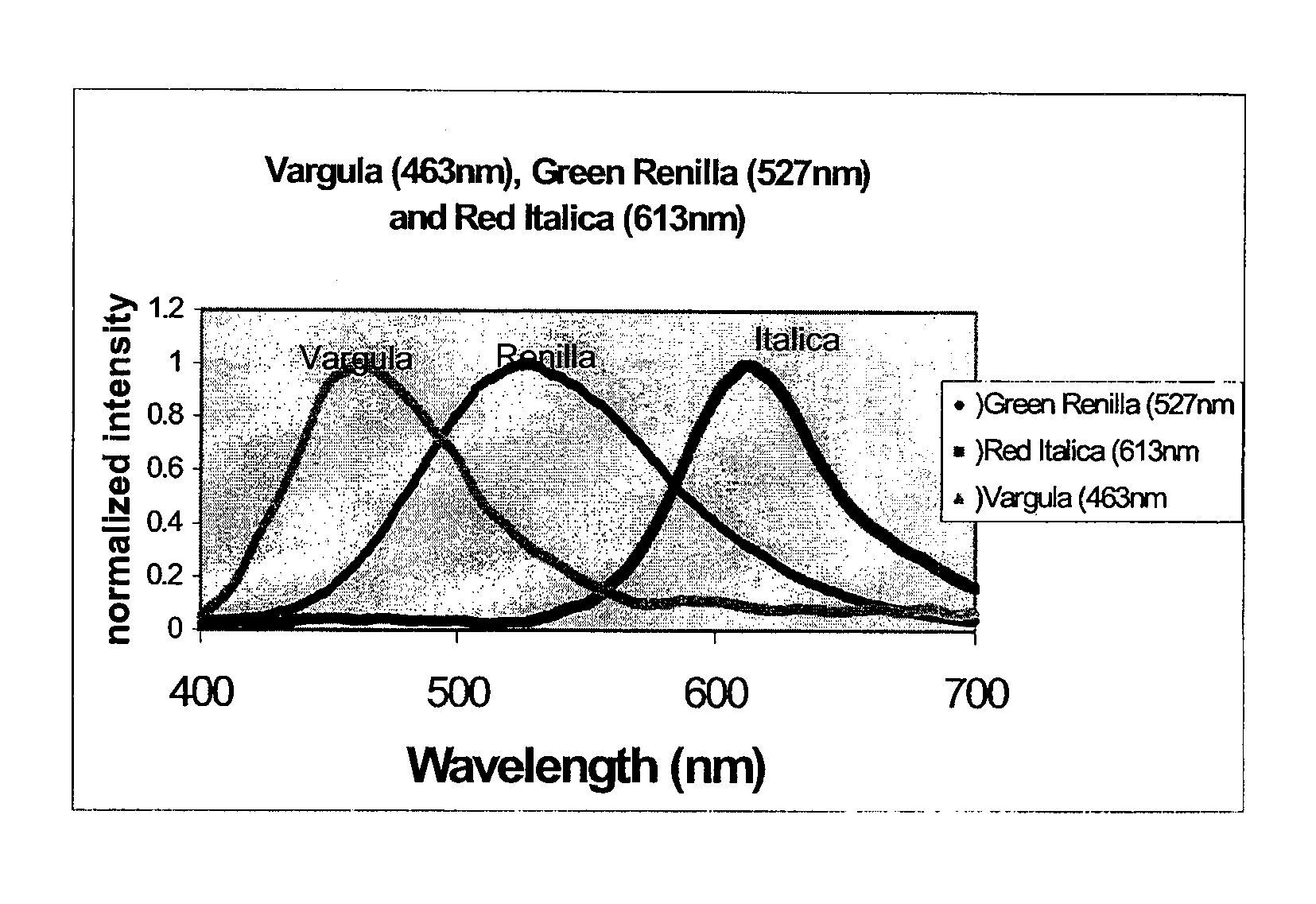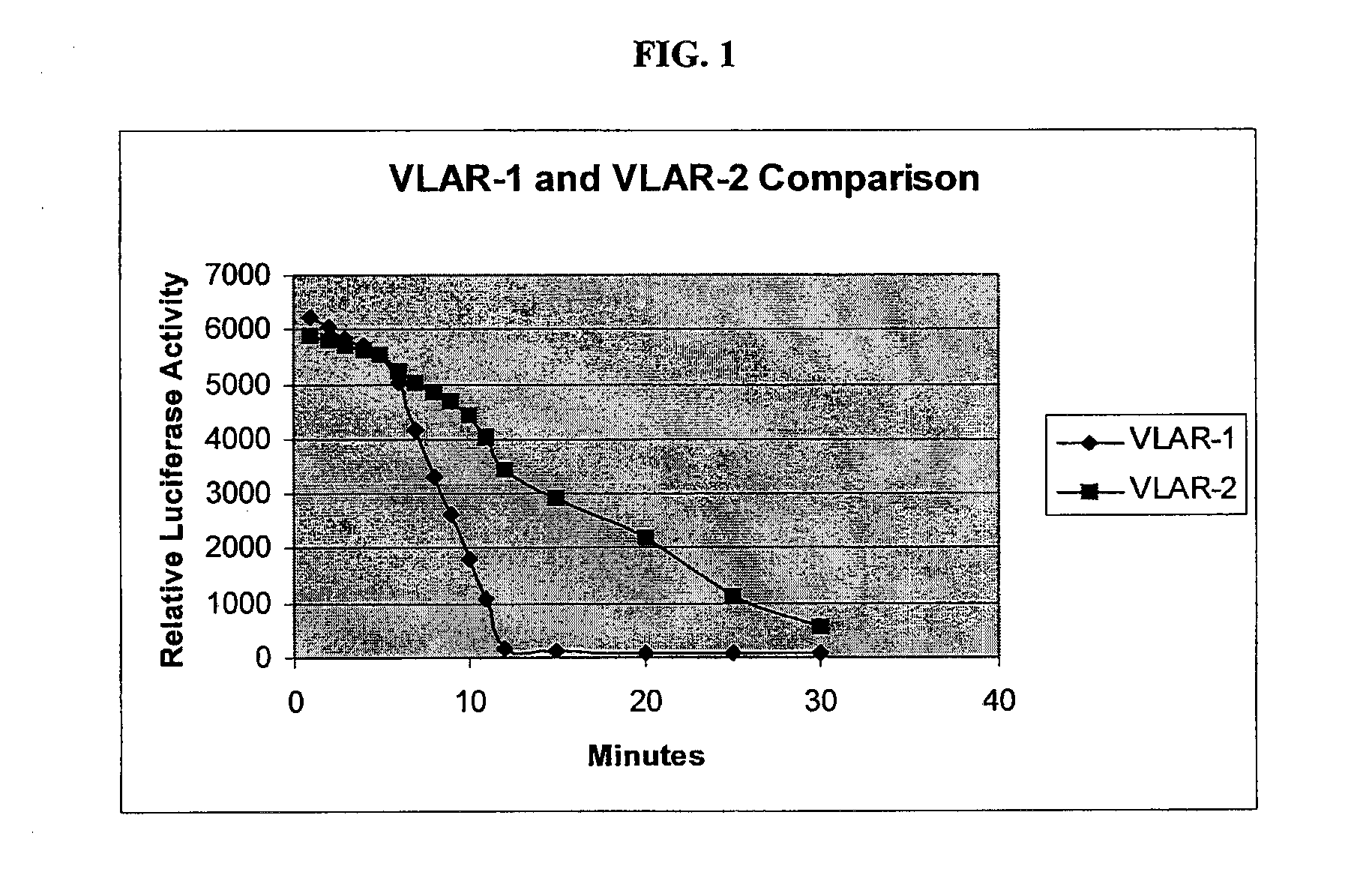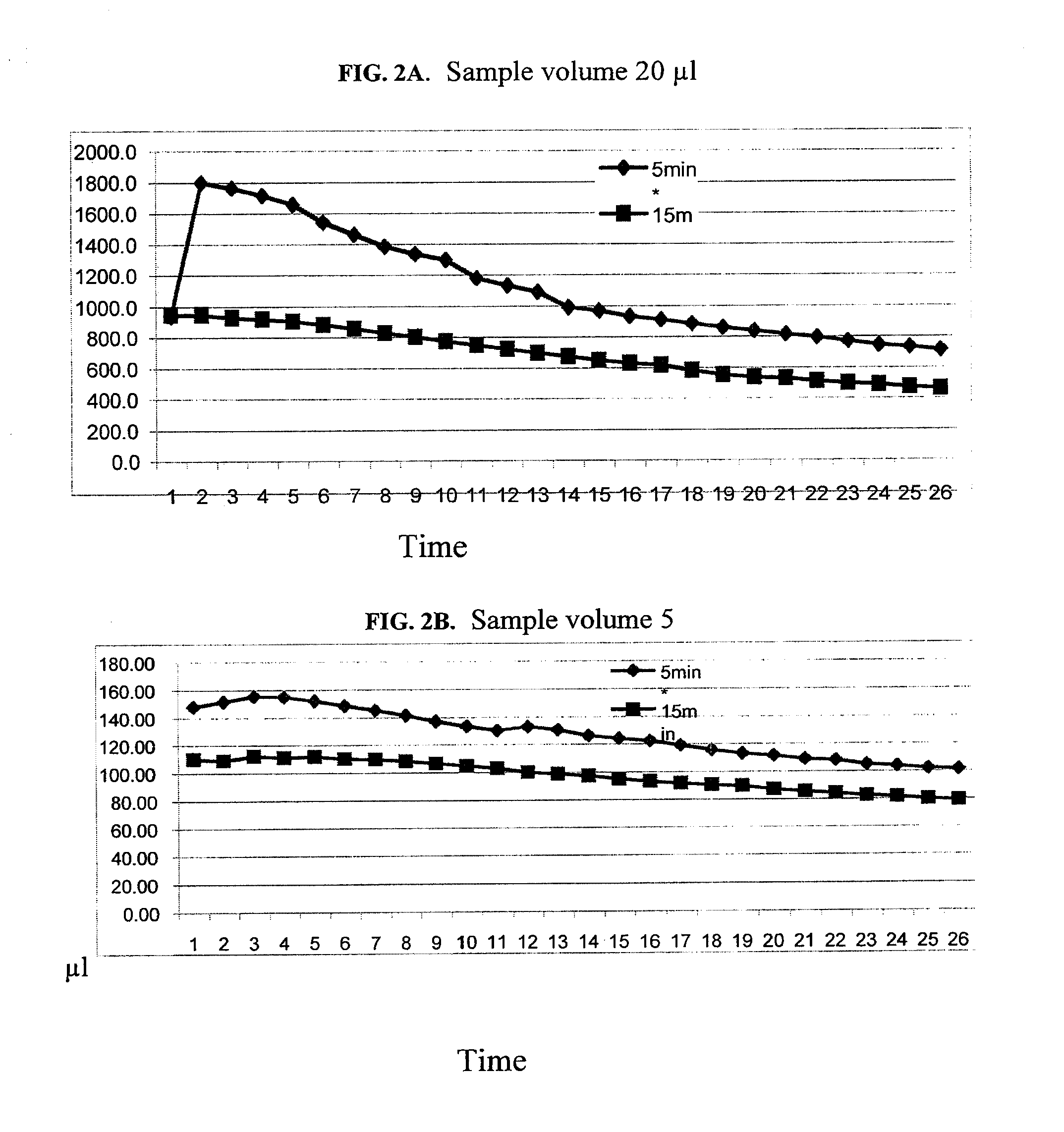Multiplex assays with multiple luciferases reporters and uses thereof
a reporter and assay technology, applied in the field of luciferase reporters, can solve the problems of difficult commercialization of assays and difficult synthesizing of cypridina /i>luciferin, and achieve the effect of increasing activity and stability
- Summary
- Abstract
- Description
- Claims
- Application Information
AI Technical Summary
Benefits of technology
Problems solved by technology
Method used
Image
Examples
example 1
Transfection of Mammalian Cells with Modified Luciferases
[0096]HEK-293 cells were grown in DMEM / 10% FBS (fetal bovine serum) and transfected with plasmids expressing either the human codon-optimized or non-human codon optimized forms of the red emitting and green emitting firefly luciferases (from Luciola Italica) under control of the CMV promoter. Transfections were performed using the Targefect F-2 reagent (Targeting Systems) using the manufacturers protocols. Forty eight hours post transfection, the cells were lysed using the cell lysis reagent (CLR-1) from Targeting Systems, Santee. 20 μl aliquots of the cell lysate were mixed with 100 μl of the FLAR-1 (firefly luciferase assay reagent from Targeting Systems).
example 2
Cypridina Luciferase Assays with Increased Stability
[0097]Compositions were developed for achieving optimal performance of Cypridina luciferase assay reagents. These assays had improved stability of the bioluminescent signal without affecting the overall activity of the enzyme.
[0098]Vargulin is generally unstable and easily oxidized, making long term storage of this substrate difficult. However, Vargulin stored in an acidic buffer (66 mM monobasic potassium phosphate, pH 6-6.5) and stored at −80° C. was very stable and did not lose activity even when stored for several months. In contrast, Vargulin dissolved in a neutral to basic phosphate buffer (e.g. 200 mM dibasic potassium phosphate (ph 8)) is very unstable and begins to lose activity rapidly within a few hours at room temperature. Cypridina luciferase activity was optimal when 200 mM dibasic potassium phosphate was used as the reaction buffer instead of 66 mM monobasic sodium phosphate. Hence 200 mM dibasic potassium phosphate ...
example 3
Renilla Luciferase Assays Utilizing Modified Renilla Luciferases and Stabilizing Reagents
[0102]The secreted modified green Renilla luciferase of the present invention showed significantly greater activity over wildtype Renilla luciferase—see FIG. 7. For the experiments pictured in FIG. 7, HEK 293 cells were transfected with expression vectors expressing either native Renilla luciferase or the secreted Green Renilla luciferase mutant. Cells were lysed 48 hrs post transfection and assayed for luciferase activity.
[0103]Assays with and without stability assay reagents for green Renilla luciferase were investigated. FIG. 6 shows that assays conducted with stabilizer showed greater stability than those without. The composition of the Renilla luciferase assay reagent (no stabilizer) was: 30 μM coelenterazine, 0.4×PBS (Ca, Mg free), 0.027% NP40. The composition of the Renilla luciferase assay reagent (with stabilizer) was: 30 μM coelenterazine, 0.4×PBS (Ca, Mg free), 0.227% NP40. Stabilizer...
PUM
| Property | Measurement | Unit |
|---|---|---|
| volumes | aaaaa | aaaaa |
| volumes | aaaaa | aaaaa |
| pH | aaaaa | aaaaa |
Abstract
Description
Claims
Application Information
 Login to View More
Login to View More - R&D
- Intellectual Property
- Life Sciences
- Materials
- Tech Scout
- Unparalleled Data Quality
- Higher Quality Content
- 60% Fewer Hallucinations
Browse by: Latest US Patents, China's latest patents, Technical Efficacy Thesaurus, Application Domain, Technology Topic, Popular Technical Reports.
© 2025 PatSnap. All rights reserved.Legal|Privacy policy|Modern Slavery Act Transparency Statement|Sitemap|About US| Contact US: help@patsnap.com



